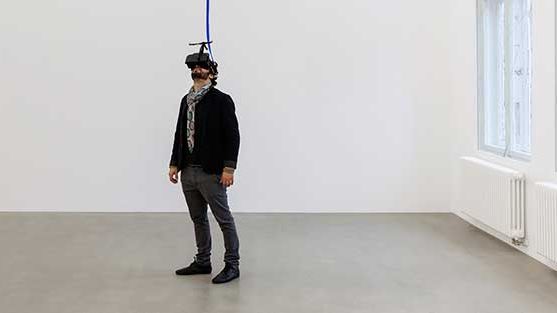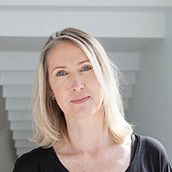
Press release -
The World was Flat
The world was flat, now it's round and it will be a hologram. The exhibition The World was Flat presents contemporary art that investigates ideas of time and space. It is about the power of astrology or the shaman as a mediator between the rational and the supernatural, but also about the human desire for order and logical explanations of all phenomena.
On Sunday, November 22 at 14:00 Bildmuseet opens the house to three new exhibitions. One of them is titled The World was Flat - an exhibition of contemporary art that engages with the topic of changing worldviews.
Welcome to the press preview on Thursday, November 19 at 10:00 am. The artists / curators François Bucher and Lina Maria López will be present at the press preview as well as the opening of the exhibition. Artists Manuela Ribadeneira and John Mario Ortiz will also be present for the opening on Sunday.
The title of the exhibition traces a journey over time. It’s a story that gives the appearance of being linear but whose chronology is an illusion. It refers to changing worldviews and to constant renegotiations over our relationship to the body and to the universe. The exhibition comments upon mankind's relationship to time and space and to a multi-dimensional universe where the distinction between the shaman's world and a contemporary cyber-sphere is no longer so obvious.
The World was Flat includes works by Julieta Aranda, Erick Beltrán, François Bucher, Rometti Costales, Harun Farocki, Jeppe Hein, Herman von Helmholtz, Klara Hobza, Bernd Kröplin, Lina Maria López, Douwe Mulder, John Mario Ortiz, Julien Prévieux, Benoit Pype, Manuela Ribadeneira, Tomás Saraceno and Daniel Steegmann Mangrané. In addition to the artworks, objects have been borrowed from the Berlin Medical Historical Museum of the Charité University Hospital.
The exhibition was produced by Bildmuseet and curated by François Bucher and Lina Maria López. It is supplemented by a series of conversations about changing worldviews in which researchers from Umeå University participate.
The World was Flat and its programming is part of the university's 50th anniversary. The exhibition is on display at Bildmuseet until 27 March 2016.
Read the press releases about Julio Le Parc / Lumière and Nisrine Boukhari / Wanderism is a State of Mind which also opens on Sunday 22 November.
Image above:
Daniel Stegmann Mangrané,
Phantom (kingdom of all the animals and all the beasts is my name), 2015
Courtesy of the artist
For further information about the exhibition, please contact
Cecilia Andersson, curator Bildmuseet
072-2238671 or cecilia.andersson@bildmuseet.umu.se
Topics
Categories
Bildmuseet exhibits contemporary international art, photography, architecture, design and other forms of visual culture, along with art historical retrospectives. Existential, political and philosophical issues are key to the programme. Last year the kunsthalle received a Special Commendation from the European Museum of the Year jury last year, and was one of the top candidates for the Swedish Museum of the Year Award as well as for the Council of Europe Museum Prize.
Bildmuseet is a part of Umeå University, housed in an acclaimed building at the Umeå Arts Campus by the shores of the Umeälven river.
Umeå University is one of Sweden's largest institutions of higher learning with over 32,000 students and 4,200 employees.

